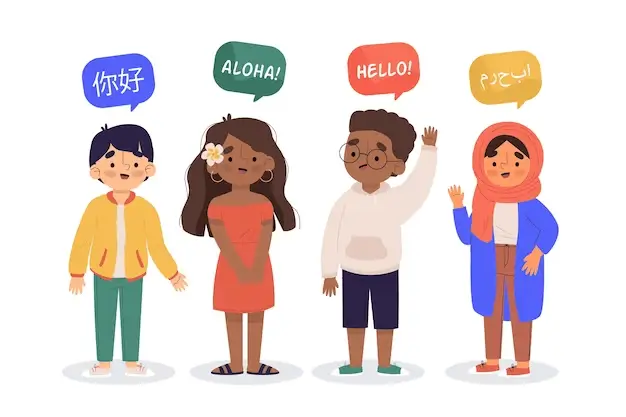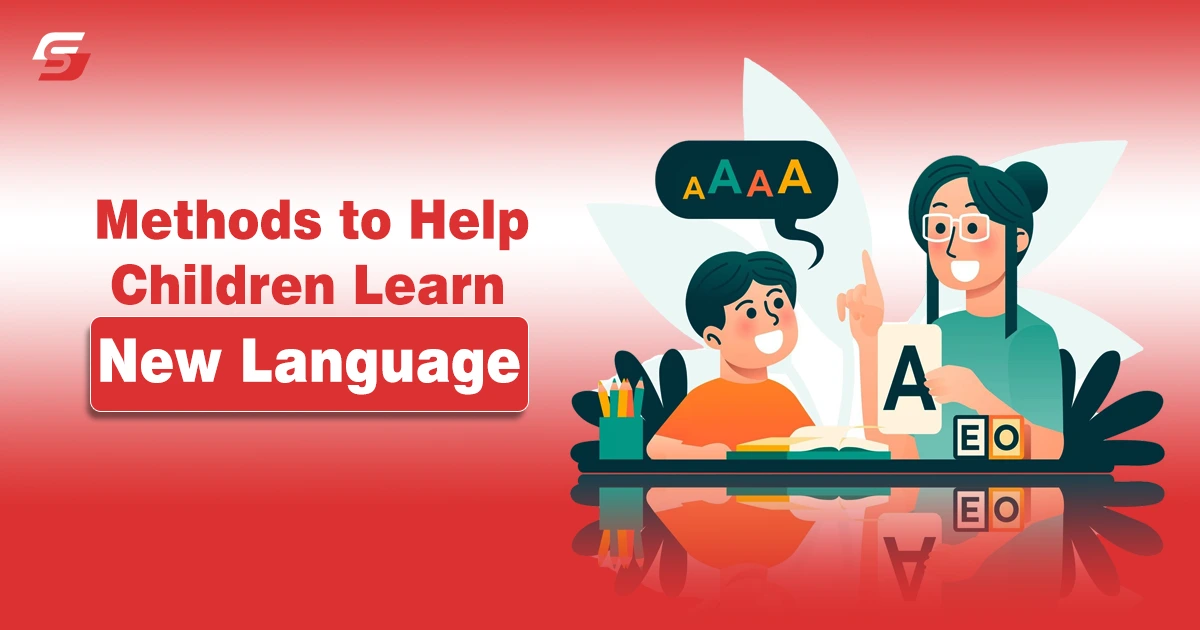Learning a new language from a young age opens up a world of opportunities and enhances cognitive development and cultural understanding. A kid who knows multiple languages can effectively communicate and it helps and encourages them to start a career abroad or make their CV strong.
It will also make them open-minded to adopt new things easily which produces creativity in their minds. However, it is important to know the interests of children and what language they want to learn so that they can adopt it as soon as possible with dedication. In this guide, we have discussed the methods to help children learn a new language.
Methods for Helping Children Learn a New Language
As I already mentioned, learning a new language helps children grab more opportunities. The method for helping children learn a new language is discussed below:
Start Early
One of the most effective ways to teach children a new language is to start early, ideally during their early years of life. Young children are like sponges, absorbing language and culture naturally through immersion. If your family is fluent or multilingual, regularly use both languages at home. Children will naturally pick up the languages through exposure.
Enroll your child in language playgroups or classes where they can interact with other children and engage in language-rich activities. Provide age-appropriate books, songs, and TV shows in the target language. Interactive and colorful materials capture children’s attention and make learning fun.
Speak It To Make
For language achievement to be successful, children need a language-rich environment where they can explore, experiment, and communicate. Try to communicate them with in the targeted language such as saying hello and goodbye. Label objects around the house with their names in both the native and target languages. It helps children associate words with real-world objects.
Try to encourage storytelling in both languages. Share stories from your cultural background and explore the target language’s culture. Try to incorporate the new language into daily routines, such as mealtime, bath time, and bedtime. Use phrases and vocabulary relevant to these activities. Engage in playtime activities that promote language learning, such as puzzles, building blocks, and board games available in the target language.

Consistency Is Key
Consistency is very important when teaching children, a new language. Regular exposure and practice help support language skills. Establish a language-learning schedule that includes daily or weekly language sessions. Consistency makes language acquisition a habit. Find language partners or friends who speak the target language.
Playdates or virtual conversations with native speakers can be highly beneficial. Influence language-learning apps and online resources designed for children. Many interactive apps and websites make language learning engaging.
Encourage Communication
Active communication is essential for language development. Try to encourage your child to communicate in the new language through and also engage your child in conversations in the target language like asking them to say Hi in Spanish. Also, you can ask open-ended questions to encourage them to express themselves. Please inspire your child to create their stories or retell stories they’ve heard in the new language.
It enhances creativity and language skills. If possible, arrange pen pal exchanges with children who speak the target language. It provides a huge context for communication. Arrange playdates with native speakers or other children learning the same vocabulary. Social interaction helps to improve language skills.
Games and Activities
If you want your kids to learn a new language faster, language games are the most effective way to engage your children with a new language. You can create flashcards with pictures and words in both languages. Also, organize a competition of vocabulary games and give them a price which makes them more excited. Explore language-specific games like word searches, memory, and crossword puzzle games.
Further, introduce cultural activities related to the target language. Cooking traditional dishes, celebrating festivals, and exploring customs enrich the language-learning experience.
Be Patient and Supportive
Learning a new language can be challenging, and children may face moments of frustration. It’s essential to be patient and supportive throughout the language-learning journey. Praise and reward your child’s efforts and progress in the new language. Positive support boosts confidence. Let your child know that making mistakes is a natural part of learning.
Moreover, you should also motivate them to learn from errors rather than fear them. Avoid pressuring your child to become fluent quickly. Language learning should be enjoyable and stress-free. It would be best if you could make learning a new language a hobby for your children as it adds more excitement to their journey.
Explore Cultural Connections
When anyone starts learning a new language, it enhances cultural connection with that language. Attend cultural events, festivals, and exhibitions related to the target language. Try to encourage your children to attend culture’s rich festivals and see their traditions. Explore the food of the culture and their environment because it will help to enhance the tone of that language.
Cooking and sharing meals from the target culture can be a pleasant learning experience. If possible, plan trips to countries where the target language is spoken. Traveling experiences can accelerate language achievement.
Monitor Progress and Celebrate Little Efforts
Celebrate your child’s language-learning little efforts to keep them motivated and excited. Recognize and reward achievements such as completing a book in the target language, mastering a set of vocabulary, or holding a conversation. Make sure to explore language resources and materials designed specifically for children.
Libraries, bookstores, and online platforms offer a wide range of books, videos, and games. Keep track of your child’s language-learning progress. Regular assessments and observations help identify areas that may need more focus or improvement.
Final Thoughts
These are the details about the methods and tips for helping children learn a new language. This can be an exciting journey that can enrich their lives and broaden their prospects. It would be best if you make your children learn the new language from the very beginning of their career. Moreover, you have to ensure that your child takes the classes consistently.
Always remember that language learning is a process, and each child’s achievement pace may vary. Be flexible and adaptable in your approach. Most importantly, enhance a love for language and cultural exploration that will last a lifetime.


